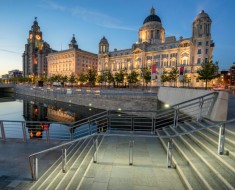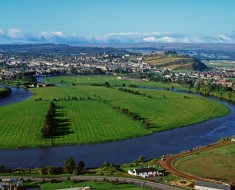As the local ‘Square by Square’ guide explains, Murcia, in the region of the same name, ‘is in the southeast of the Iberian peninsular in the valley of the River Segura, sheltered in the foothills of the Carrascoy, Cresta del Gallo and Pia mountain ranges’. We were there for a few hours earlier this year. It has a population of 350,000 according to the Guide – 442,573 if you take Wikipedia’s word for it. The lesser figure is comparable to its nearest neighbouring city, Alicante, from which we travelled by train. Strolling through the city, with its characteristic squares and open streets, there were few people around and it felt almost as if we had the city to ourselves.
There is statuary as well as gardens and trees in all the squares we saw. Something to do with the Easter celebrations we imagined.
The Cathedral closes to visitors at 1.00p.m.,so we were gently ushered out just as we were ready to spend more time there. Had it not been so hot we could have spent time looking at the extraordinary west front of the building, itself a celebration of the baroque.
The Segura River crosses the city from west to east and is known to produce occasional flooding, like those that inundated the capital in 1946, 1948, 1973 and 1989. Sadly the Segura is recognized as one of the most polluted rivers in Europe. It also has the distinction of harbouring the only artificial serpent or fish we have ever seen. A few metres long, its tail can be seen at one end and its head – spouting water – at the other. We took several photos to convince ourselves that what we had seen was really there. A city with a sense of humour!
In such a short time we can do little but say that we had a delightful experience. We like cities and we liked this one. We must go again.
B.R.





